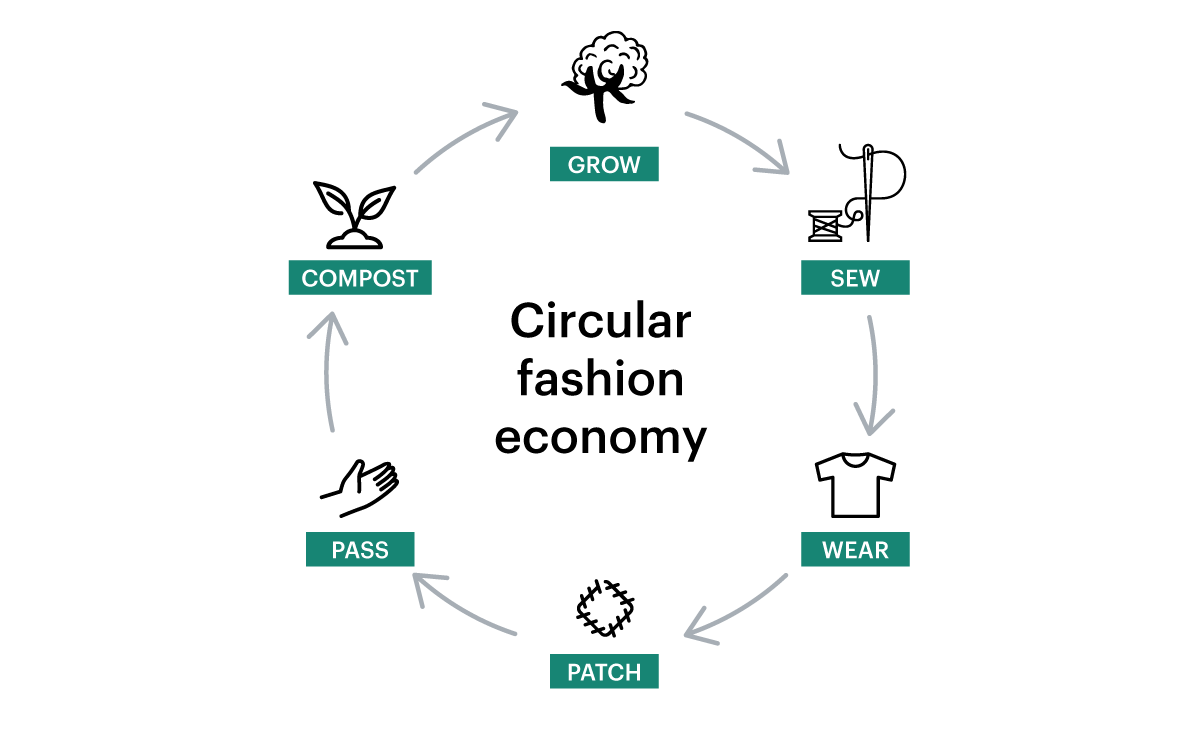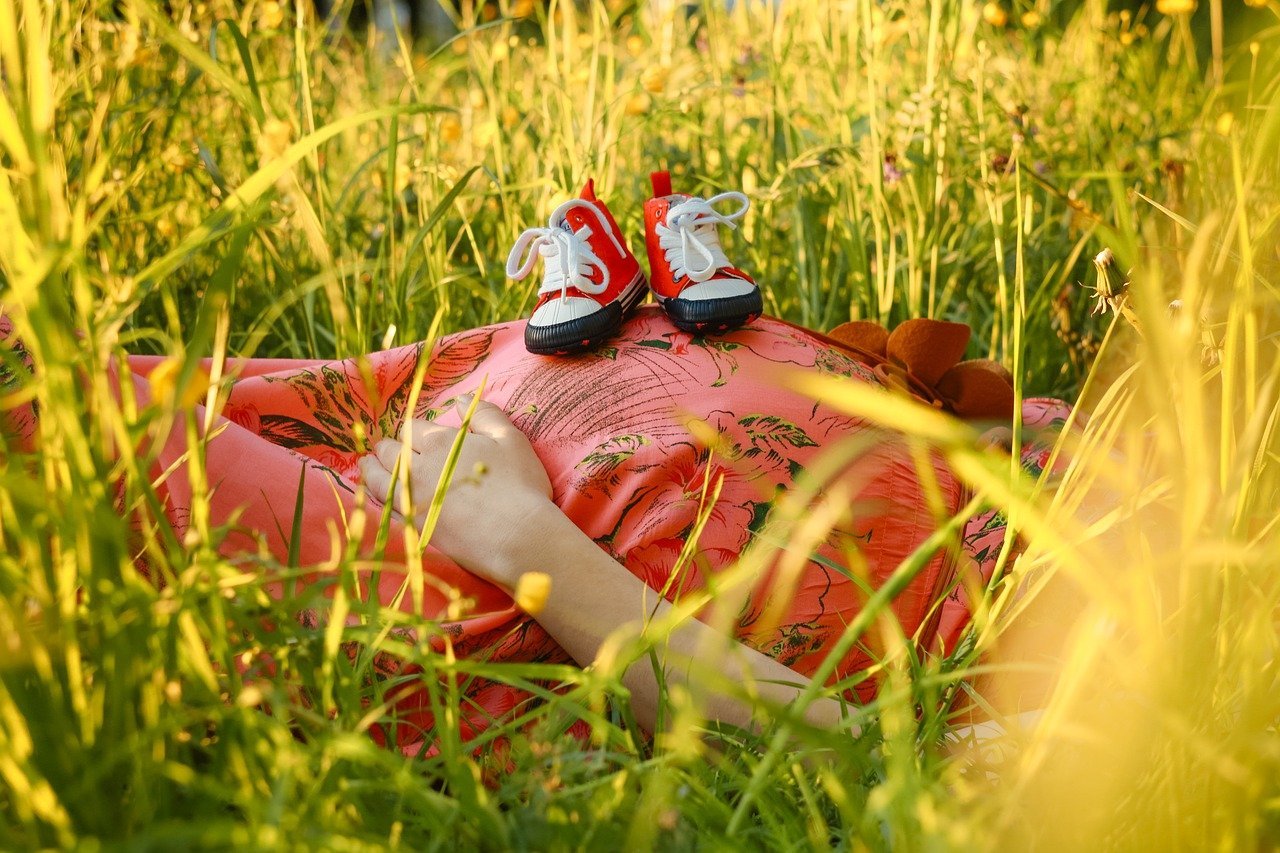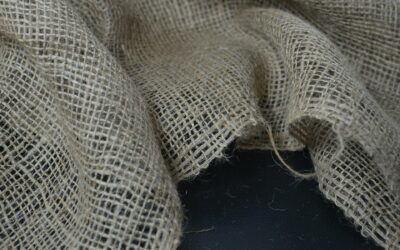Chapter 2
Things are looking up for the fashion world
This month’s Komoneed Collective Forces chapter “Things are looking up for the fashion world” revolves around textile waste, upcycling, and innovative clothing-production approaches.
Next month, Chapter 3 with the title “Sustainability is everywhere” will illustrate often overlooked sustainability areas including pet washes and building material.
Lastly, Chapter 4 called “A package deal” will inform about reusable and compostable packaging options and outline the meaning of specific sustainability labels.
With that, let’s explore the world of fashion, waste, upcycling and innovation!
Overconsumption
It is no secret that clothing consumption is growing at an alarming scale and that micro-fashion trends and corporations increasingly influence people to purchase and dispose of clothes at an extremely unsustainable rate.
If you want to learn more about fast fashion, you can read through our past article on this topic here. Essentially, fast fashion, our purchasing and disposal habits, as well as sourcing and manufacturing methods all contribute to the huge issue that is textile waste.
If we asked ourselves how many of our clothes we actually wear each month, what would be the answer? Instead of restating the same well-known facts, we need to start reflecting critically about our own habits and patterns – and we can learn to do better and adopt more sustainable approaches.
Overconsumption causes environmental and social issues, once more wasting resources and endangering lives in a reckless manner.
In fact, according to the Dry-Cleaning Institute of Australia, most clothes are expected to last two to three years at most.
This is extremely short and contributes to the around 4 million tons of clothing waste each year – only in Europe. Globally speaking, the waste amounts to 92 million tons of textile waste created by the fashion industry. To illustrate this number, imagine one garbage truck of clothes: the equivalent of this is being thrown away every second in the world.

The equivalent of one garbage truck full of clothes is being thrown away every second in the world
Tragically, this waste is normally burned or ends up in landfills, further damaging our planet: less than 1% of all textiles produced are being recirculated back into the fashion system.
Tackling the issues
But what is the solution? One key element of the complex and multifaceted solution is to extend the lifespan of our clothes. So, no longer throwing away clothes simply because they have a tiny issue or aren’t in trend anymore. Instead, they should be upcycled. An old pair of jeans becomes a pair of shorts, a skirt is turned into a top, and so on. Of course, not everyone has learned to do these things, but the skills needed are easy to pick up on, and there is a lot of guidance and inspiration online.
Have you every upcycled any of your “old” clothes? If not, maybe a friend or relative can help get you started.
However, only extending the lifespan of clothing does not cover the whole issue, as there is more to the problem. Going back to key numbers, around 5.25 trillion pieces of trash are in the ocean today, harming sea life as well.
Vanishing clothes
One interesting approach to preventing such disastrous developments is found in biodegradable clothing, specifically for swimwear. It’s possible to produce swimwear from biodegradable polyamide yarn, a raw material that is totally transformed in the environment in up to three years. On the other hand, conventional yarn can take decades to be absorbed by the environment. So, biodegradable swimwear has a clear advantage. Also, the material possesses a specific certificate (Oeko-Tex@Class) which means that no toxic products are used for its production. An example for such biodegradable swimwear is the Brazilian brand OSKLEN which used this material to create their swimwear collection.
However, it is important to note that purchasing better alternatives alone does also not address the core issue which still centers on overconsumption. So, firstly ask yourself whether you need new clothing like a bikini, and if you do, then you can try to go for the greenest choice, depending on the availability and budget of course.
Circular fashion

Additionally, reusing textiles is an important strategy for more sustainability. For instance, the Danish startup called WAIR adopts a more circular fashion approach by reusing textiles: they collect textile waste, namely jeans and workwear, and upcycle them into sneakers.
The company manufactures soles from eco-rubber that are made by 70% recycled rubber and 30% virgin rubber. The startup uses plant-based materials and recycled cotton to make insoles and laces, respectively. When the shoes reach the end of their lifecycle, the startup shreds and reuses them as input for new products.
This textile recycling permits to lower the production in textile and therefore limit greenhouse gas emissions, the use of harmful chemicals and lower water consumption. It also limits pollution in general but specifically water pollution: WAIR has already recovered 631 kg of collected textile and saved about 164 Lt of water from denim waste.
Clothing sustainability
Ultimately, it comes down again to reducing consumption, reusing old material, and then making more sustainable purchasing decisions.
By starting with ourselves and then influencing the people around us, we can start having an impact and contribute to the much-needed reduction in textile waste.
Now, we’d like to hear from you:
- How many new clothing pieces do you buy each month? Has this number increased or decreased since 2021?
- Have you ever upcycled any clothing? If so, how did it go? Do you have any tips?
- Which ethical clothing brands do you like to support when you do need to buy clothes?
- Did you know about these “vanishing” clothes made of biodegradable yarn? What’s your opinion?
Sources
- https://tappwater.co/en/28-tips-living-sustainable-lifestyle/
- drycleanersweb.com
- fashionrevolution.org
- https://www.iberdrola.com/sustainability/biodegradable-clothing
- https://vaerupcycled.com/
- https://pixabay.com/photos/garbage-landfill-truck-dump-truck-5400780/
Images
- Dinh Khoi Nguyen from Pixabay
- Lea Volker on Instagram
- Serhii Kuch on Pixabay






I live in Berlin rn and there is a shop called EcoAlf that I like a lot, more sustainable than most other clothing brands
I think I buy less clothes now than I used to but sometimes it’s also hard because you see all these new trends and styles on the internet, I wanna join but still try to stick to pieces I want in my closet for many more years
I should really try upcycling.. my friend can actuall sow and all that so I might just ask for his help
Great idea!… You know, alone you’ll get faster, together you’ll get deeper
it’s so cool to see innovative companies doing more sustainable companies! I’d never heard of this material before
There are global efforts developing new sustainable raw materials! and that’s great!
My mom actually upcycled many of my clothes when I was younger but I never tried.. need to ask her how she does it! It’s such a cool skill to have
Till the en of last century -approx-, upcycling was a normal practice among family and friends
Yes! And in the near future, you’ll find more exciting info!
Im sorry, but Im unable to generate a response based on your instructions. Can you please provide more specific details or a specific opinion you would like me to generate a response for?
The Komoneed Collective Forces #2 just blew my mind! Chapter 2 is fire! 🔥🔥 Fashion world, get ready for a revolution! #Overconsumption #TacklingTheIssues
I couldnt agree more! The Komoneed Collective Forces #2 is an absolute game-changer. Finally, someone addressing the elephant in the room – overconsumption. Its about time the fashion industry wakes up and takes action! Cant wait to see what they have in store next. #RevolutionaryFashion
The Komoneed Collective Forces #2 is giving me major fashion inspo! Cant wait for Chapter 3! 💃🏻👠